We do not ride on the railroad; it rides upon us.
∼Henry David Thoreau
In the late 1970’s I attended a one-month technical seminar in downtown Chicago. I was working as an engineer for a manufacturing company in Northern Illinois, and they had bought into a new technology which most of us in the engineering department were as yet, unfamiliar with. They sent each of us to the seminar individually, over a period of six months, so the department wouldn’t be short-handed. The material was as dry as a bleached-out coyote carcass in the middle of the desert, and though I got through it, there was a strong pull to daydream, during the four-week period.
I matched wits with the best of em
I was living in Kenosha, Wisconsin again, after four years of military service followed by a three year stay in Southern California. Kenosha is about sixty miles from downtown Chicago, and a brutal commute for those who have to drive it. Fortunately, the Chicago Northwestern (CNW) Railway ran from Kenosha to Chicago, and all points in between. The train, in most locals, was known simply as The Northwestern. I was already familiar with the CNW Kenosha depot and trains, having worked across the street at Becker’s Cigar Store during my high school days. Passengers and gandy dancers (railroad maintenance workers) from the trains would often come into Becker’s for coffee, cigarettes, magazines or beer. Bo’s (hobos) would jump off the incoming freight trains and make their way over to the store to panhandle. Becker’s was a one-man operation so I had to keep an eye on them as some would steal you blind, given the chance. Working at Becker’s was quite an education for me.
At the time of the seminar, the Northwestern train station in Kenosha was just a short ride from where I lived. Once there, I’d get a paper, coffee and donut, then make myself at home in one of the train cars. I often rode the same car every day on the way down. The ride from Kenosha to downtown Chicago took about an hour to an hour and a half, depending on which train you boarded. Some of the routes, stopped at each burg along the way, others not so many, so you had a choice. I always liked being early for appointments, work schedules, school periods (reveille in the service) etc. With that in mind, I usually took the train that would get me into the downtown Chicago Northwestern station and on to my destination, a half hour early. The desire for such promptness is not because I’m an eager beaver, go getter, or brown noser, but rather it’s because I like to goof around along the way, and goof around more when I get there. Take time to smell the flowers, as they say. ?
The Yellow Rooster would never be mistaken for The Bullet Train
Now over the course of my life, I’ve had the opportunity to travel on many railway systems; Amtrak, the old Chicago North Shore, as a child, the El in Chicago, and the impressive Bullet train in Japan. Having said that, I can safely say that the Chicago Northwestern was the least impressive railway. The CNW trains that I traveled on were old and rickety. The quality of the railroad tracks were light years behind the precision running surfaces you see on many modern railways. When we were kids, we crossed the Northwestern tracks many times on our way to and from Lake Michigan. We could hear the rumbling CNW trains from miles away, and we would sometimes find train parts along the tracks, after they had passed. One of the highly prized finds were the large steel bearings from the train wheels. They became the “steelies” in our marble collection, and having a regular source of supply put us in high standing in our neighborhood. (My uncle who worked for the Santa Fe railway in Chicago, would also bring us steelies, now and then)
The Northwestern passenger trains, at the time, had a lavatory in every other car, however experienced riders would make an effort to perform all necessary bodily functions before or after the rail trip. Cleanliness, fresh air, and tissue paper were frequently lacking in CNW lavatories.
A Rooster double decker, in it’s prime
Despite the lack of polish and slack maintenance routine, I enjoyed the daily train rides very much. Each car had a set of “regulars” who traveled back and forth between Kenosha and Chicago or points in between. The regulars gathered in little groups, segregated by personality, activity or interests. While some travelers preferred solitude and sat by themselves, groups of riders often banded together to play cards, chess, checkers, or for sports, business or leisure time discussions. As a newby and a short-timer, I didn’t really have time to get drawn into any of the cliques, though I did get friendly with some of the regulars and conductors and chatted with them from time to time. The regulars on the car which I rode most often, referred to the train as The Yellow Rooster. The name was no doubt, borrowed from the name for an antiquated train line in China, known as The Iron Rooster. (In 1988 Paul Theroux penned a book about his journey on such a train, titled Riding the Iron Rooster by Train, Through China) And although I’ve never heard anyone else refer to the CNW as The Yellow Rooster, before or since, in my mind, it will forever be The Yellow Rooster.
Be that as it may, the “Rooster” left Kenosha on a round trip to Chicago many times each day. The conductor in the passenger cars would pass through and announce each stop along the way.
“Zion…Waukegan…LAKE Forest…Highland Park”….
And so on, and so on until we reached our final destination in Chicago. Each conductor intoned the information differently. One conductor, a rider favorite, reported each stop in a bit of sing song fashion. He also offered bits of information on the weather, current events, or other interesting topics as he strolled through the cars. Some of the regulars plied the conductors with treats and tips. Ignorant, regarding the politics of Rooster passenger ethics, I made no effort to do the same. About the 2nd or 3rd week of my daily ride, however, one of the more brazen conductors razzed me a little about the lack of gratuity. I thought he was joking at first, but after chewing on it, I realized he was just working with the “system”. After that, I made sure to buy an extra sweet roll every morning, with one earmarked for the conductor. 😉
When we finally rolled into Chicago, the landscape changed. The train, which had previously traveled through pleasant small towns and suburbs, now passed through a gritty urban environment. Some of the buildings were so close to the tracks, it felt like you could reach out and touch them. Through large, ancient windows, residents in old tenement buildings were sometimes visible as we headed in and out. I felt like an intruder, peering in on them, as they carried on with their lives.
Disembarking at the Northwestern Station, you found yourself inside an enormous building, with multiple trains coming in and out all day and night. The large structure had a huge inner court, with shops of all kinds lining it. It took several minutes to pass through the noisy, bustling site. Once outside, I’d cross the nearby bridge over the Chicago River, and walk about two blocks to the office building where my seminar was being conducted.
In the lobby, I’d ride the elevator to the twentieth floor. The office where the seminar was held had outer walls lined with large windows offering a view to other large buildings in the area. A welcome distraction during our dreary seminar was watching window washers on nearby buildings, when they were within view. They would set-up on the roof of a building and lower their scaffold down as they worked. Most of us expressed the sentiment that we couldn’t be paid enough to do that job. And as if to convince us, two window washers on a building several blocks away, fell to their deaths during the seminar. Though out of sight, it was a bit unsettling and of course every time window washers came into view after that, we were fearful for them.
Impressive, beautiful, and at times dangerous
Our one-hour lunch break allowed us to make short forays into the nearby environs. Chicago is as different from Kenosha as night is to day, and the shops, restaurants and hustle and bustle got my attention. Downtown Chicago, and the immediate area, has many interesting attractions, the Field Museum, the Museum of Science and Industry, Rush Street, Wrigley Field and The Willis (then Sears) Tower, to name a few. On several days I took later trains home, so I could spend more time exploring Chitown.
The Sears (now Willis) Tower was just a few blocks from our seminar and had been in the news quite a bit during that time, relating to problems with the windows in the huge skyscraper. The large windows were blowing off of the building and had killed and injured several people on the ground. On the sidewalks and extending into the streets surrounding the building, wooden enclosed walkways had been erected with heavily fortified roofing, to protect pedestrians.
The lead instructor of our seminar, a middle-aged woman, had been walking by the tower on a day prior to the scaffolding enclosure. Incredibly, experiencing a premonition, she stopped in her tracks and held both arms out, preventing other pedestrians from proceeding past her. Seconds later a huge section of window crashed to the ground several feet in front of her. She actually incurred a small injury when she was hit in the shoulder by a piece of the falling debris. Her story was confirmed by several witnesses, and became part of seminar folklore.
On one seminar day, I spent the early evening visiting the Sears Tower, before catching one of the last trains back to Kenosha. I took the express elevator up to the observation deck and loitered there for over an hour. At 1,730 feet in height, it was the world’s tallest building at the time. Viewing Lake Michigan to the east, and Wisconsin to the north was most impressive. And yes, all the vehicles on the streets below looked like ants. I also visited the Prudential Building and a few other landmarks in the area, during that same month.
When the seminar was finished, I was glad the tedium was over, however, I missed the interesting train rides on the Yellow Rooster. I also missed my fellow passengers and conductors, along with the diverse scenery and hustle and bustle of the City of Broad Shoulders.
New name, same train
The Chicago Northwestern line is currently owned by Union Pacific Railways, and is now known as Metra, but it will always be the Northwestern to some, and the Yellow Rooster to others who rode the gritty, no-frills conveyance. And I can still hear the sing-song voice of our pleasant conductor, calling out the towns along the way.
”Zion….LAKE Forest…Highland Park ….”
***
You are welcome to share this story, in it’s entirety, crediting Joe as the author. Copyright protected, all rights reserved © Joe Campolo Jr
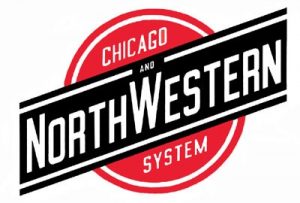

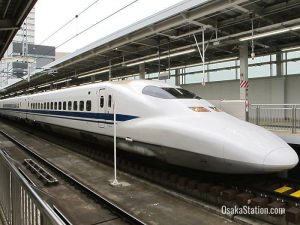
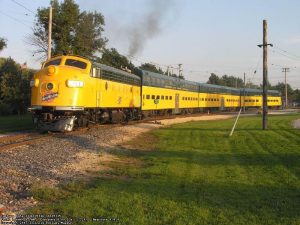
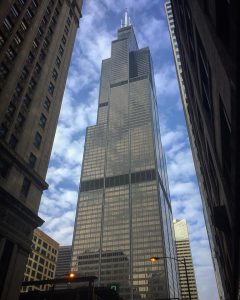
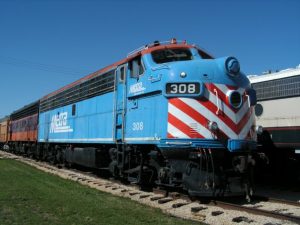
The commuter trains did not run to Milwaukee. They went as far to Kenosha. I was a ticket agent at Jefferson Park from 1981 to 1985.
Thank you Tom, I’ve tweaked the story a bit.